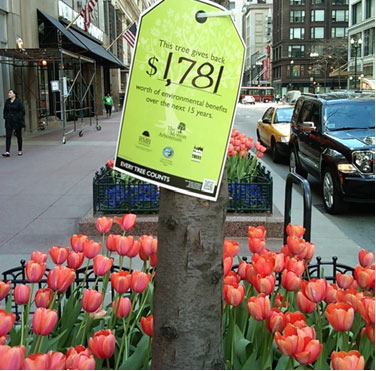The Chicago Department of Transportation just released its Chicago Forward Action Agenda, which is the department’s strategic plan. You can read a good summary of it over at Grid Chicago and the full plan is available here. The plan has six elements. Here is my immediate reaction to the plan.
Safety
- Eliminate all pedestrian, bicycle and overall traffic fatalities within 10 years.
I agree that traffic fatalities can be reduced and/or prevent through structural and design changes, but I think only to a point. We can’t control driver behavior. While this is a laudable goal, I don’t see funding to implement the changes that CDOT’s studies may suggest. Definitely not over 10 years. I do, however, appreciate additional study that could lead to small, but immediate safety improvements, particularly for bicyclists and pedestrians.
- Reduce pedestrian and bicycle crash injuries, each by 50% within 5 years.
Another laudable goal, but what I’d like to have seen in the actions list is (and perhaps this falls under the Complete Streets policy) a re-engineering of the roads to slow down traffic. This could be accomplished through technology like speed cameras, but also through road diets and lane width shrinkage.
Rebuild and Renew
One area that is missing, and kudos for Grid Chicago for asking Gabe Klein about this, is partnerships with the other transit agencies besides CTA. And while I accept that CTA and CDOT have close working relationships for historic, political and practical reasons, the CTA is not the only mode of public transportation in the city. I’d love to see the city partner to improve commuter rail stations, both downtown and in the neighborhoods in as meaningful a partnership as the City has with CTA.
Choices for Chicago
I cannot emphasize enough how happy I am to read that the car “should be a choice, not a requirement.” This is true multimodal thinking! Let’s hope that the plan does not do anything to make it easier to drive in Chicago. It is already easy enough. While not the purview of CDOT’s silo, I would have loved to see an action item stating that CDOT would work with the Department of Housing and Economic Development on land use and zoning issues that would support transit and bike/pedestrian modes better.
Sustainability

The environmental value of a tree. Source: CDOT
One of the coolest things that I’ve seen around downtown, highlighted in this plan, is the GreenStreets campaign, where the trees have “price tags” that illustrate the environmental value of the tree.
Fueling Our Economy
I think the very first performance measure, to increase activity, sales revenue, and occupancy rates in neighborhood commercial districts, is a fantastic example of breaking out of the silo. This is a problem that will have to be addressed city-wide through multiple agencies. Recognizing that streets can “add value” to the neighborhoods means that you begin looking at streets in “complete” terms, as in how can a street serve multiple modes simultaneously?
This is it, for now. I’m happy to see CDOT embark on a strategic plan with a clear vision for what Chicago should be. I cast a critical planners eye, but I hope to convey that this is, however imperfect, a wonderful product. Now let’s see the implementation plan.



